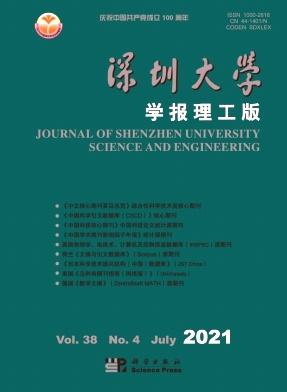Encapsulation of enzymes into nanogel and associated degradation of phenolic compounds
Q4 Engineering
Shenzhen Daxue Xuebao (Ligong Ban)/Journal of Shenzhen University Science and Engineering
Pub Date : 2023-07-01
DOI:10.3724/sp.j.1249.2023.04393
引用次数: 0
Abstract
Abstract: As an effective means of degradation of phenolic pollutants, peroxidase exhibits high catalytic activity but poor environmental tolerance, and it is difficult to be widely used in sewage treatment. In order to enhance the environmental tolerance of horseradish peroxidase (HRP) and be used for phenol degradation, the modified horseradish peroxidase (HRP) was gelatinized and embedded in gel and acryloylated through the amino or carboxyl groups on the surface of HRP, and two encapsulated enzymes (n-HRP@PAM, c-HRP@PAM) were prepared by in situ free radical polymerization reaction with acrylamide (AAm). Mass spectrometry revealed that up to nine double bonds could be grafted on the carboxyl groups of HRP, and more than the number of double bonds grafted on its amino groups. Dynamic laser scattering showed that the two encapsulated enzymes were uniformly dispersed in aqueous solution. Furthermore, the enzymatic activity and thermal stability of two encapsulated enzymes were explored with the colorimetric reaction of tetramethylbenzidine, and the influence of HRP concentration and hydrogen peroxide on the degradation of phenolic compounds was studied. The environmental tolerance and酶在纳米凝胶中的包封及其对酚类化合物的降解
本文章由计算机程序翻译,如有差异,请以英文原文为准。
求助全文
约1分钟内获得全文
求助全文
来源期刊

Shenzhen Daxue Xuebao (Ligong Ban)/Journal of Shenzhen University Science and Engineering
Engineering-Engineering (miscellaneous)
CiteScore
0.90
自引率
0.00%
发文量
14
 求助内容:
求助内容: 应助结果提醒方式:
应助结果提醒方式:


